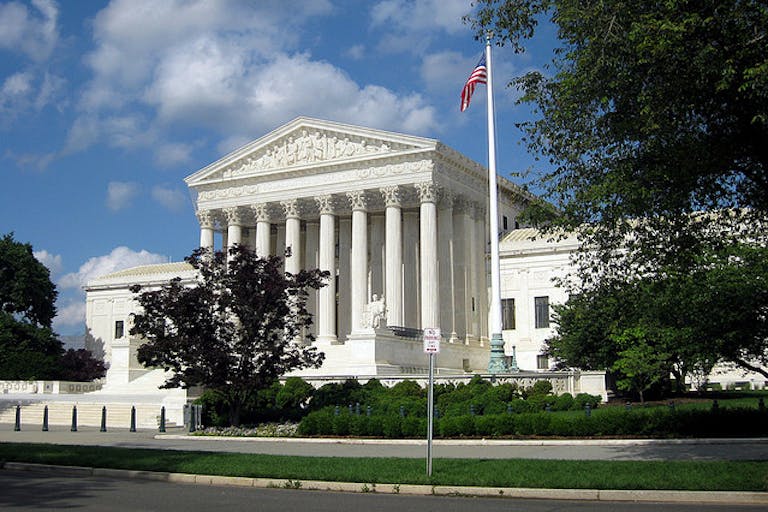
Welsh women denied needed pregnancy medication are getting abortions
Cassy Cooke
·
The legal history of abortion:the aftermath of <em>Griswold v. Connecticut</em> 47 years later
The US Supreme Court. Photo credit: wallyg on Flickr.
Just how did the right to an abortion appear in the Constitution? It’s found in the Fifth Amendment, which reads in relevant part, “No person shall … be deprived of life, liberty, or property, without due process of law.” And the Fourteenth Amendment: “No State shall make or enforce any law which shall abridge the privileges or immunities of citizens of the United States; nor shall any State deprive any person of life, liberty, or property, without due process of law; nor deny to any person within its jurisdiction the equal protection of the laws.” You see it there, right? The language dealing with the constitutional right to have an abortion?
What I see is that no person shall be deprived of life without due process. We have a constitution that is designed to protect life. But right now it is doing the opposite.
A “right to privacy” has been found to be implied within our Constitution. This sounds great at first glance. Everyone likes his or her own personal bubble. Everyone likes his or her privacy.
Article continues below
Dear Reader,
In 2026, Live Action is heading straight where the battle is fiercest: college campuses.
We have a bold initiative to establish 100 Live Action campus chapters within the next year, and your partnership will make it a success!
Your support today will help train and equip young leaders, bring Live Action’s educational content into academic environments, host on-campus events and debates, and empower students to challenge the pro-abortion status quo with truth and compassion.
Invest in pro-life grassroots outreach and cultural formation with your DOUBLED year-end gift!
The case that laid the groundwork for this right to privacy was Griswold v. Connecticut. On June 7, 1965, the decision was issued in that case. Now, forty-seven years later we can see where that decision has taken us.
Back in the 1960s, Connecticut had a ban on contraceptives. This ban was challenged, and the case made it to the Supreme Court, where the Court found:
Would we allow the police to search the sacred precincts of marital bedrooms for telltale signs of the use of contraceptives? The very idea is repulsive to the notions of privacy surrounding the marriage relationship.
We deal with a right of privacy older than the Bill of Rights — older than our political parties, older than our school system. Marriage is a coming together for better or for worse, hopefully enduring, and intimate to the degree of being sacred. It is an association that promotes a way of life, not causes; a harmony in living, not political faiths; a bilateral loyalty, not commercial or social projects. Yet it is an association for as noble a purpose as any involved in our prior decisions.
With the right to privacy on the books, it was only eight years before the concept was expanded in the infamous Roe v. Wade case. Yes, the ability to abort one’s child was recognized in the Constitution under the right to privacy, a right that was established forty-seven years ago today.
Live Action News is pro-life news and commentary from a pro-life perspective.
Contact editor@liveaction.org for questions, corrections, or if you are seeking permission to reprint any Live Action News content.
Guest Articles: To submit a guest article to Live Action News, email editor@liveaction.org with an attached Word document of 800-1000 words. Please also attach any photos relevant to your submission if applicable. If your submission is accepted for publication, you will be notified within three weeks. Guest articles are not compensated (see our Open License Agreement). Thank you for your interest in Live Action News!

Cassy Cooke
·
Analysis
Cassy Cooke
·
Analysis
Angeline Tan
·
Analysis
Cassy Cooke
·
Politics
Madison Evans
·
Opinion
Nancy Flanders
·
Politics
Heidi Miller
·
International
Heidi Miller
·
Politics
Heidi Miller
·
Politics
Heidi Miller
·
Investigative
Heidi Miller
·